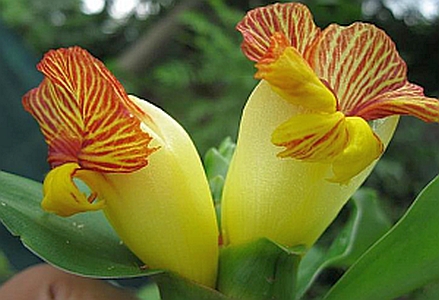
Hope for diabetes patients: Leaves of the Costus pictus D. Don plant has anti-diabetic properties
Wouldn't it be nice if you could treat your diabetes by just eating one leaf-a-day, thereby requiring no insulin injections or any other medications? This dream can now be realized by the people residing in the southern region of India. Costus pictus D. Don which is also known as the insulin plant or 'spiral ginger', is a plant whose leaves have been shown to have a hypoglycemic effect when consumed. This plant belongs to family Zingiberaceae, which is also known to have anti-inflammatory and anti-tumor properties.
Dr Annadurai S Ramasamy, former research director, Genotypic Technology, tells BioSpectrum that on learning about this plant, he became curious to study its probable anti-diabetic properties and initiated a next generation sequencing (NGS)-based approach to sequence the C. pictus transcriptome in order to identify and characterize transcripts potentially contributing to the observed medicinal properties of the plant leaves.
Genotypic Technology, a Bangalore-based genomics company, is a pioneer in providing next-generation sequencing and microarray services. Dr Sudha Rao, chief operating officer, Genotypic Technology, mentioned to Biospectrum, that, "When Dr Ramasamy told about the benefits of the leaves of insulin plant, we immediately got excited to unravel the probable mode of action quickly using next generation sequencing.
The challenge is that the functional annotation of identified transcripts (or RNA) is key to elucidating the mode-of-action and this is a bigger challenge for plants. So the key highlight of this study was the functional annotation of the transcripts of C. pictus."
The data identified transcripts related to pathways of bixin, geranial and geraniol biosynthesis which are known to be peroxixome proliferator activated receptors (PPAR) agonists and anti-glycation agents. Interestingly, current PPAR gamma agonists such as pioglitazones are used as anti-diabetic medication.
The data also provides vital clues related to the other phytochemical functions such as anti-tumor, anti-oxidant, immuno-modulatory, anti-microbial and anti-malarial properties through the secondary metabolite pathway. Dr Rao commented that, "Since large portions of the transcripts are involved in bixin biosynthesis in the plant, we believe this is implicated in anti-diabetic properties of the leaves".
When asked if we can see a drug coming out of a bioinformatics company, Dr Rao replied that, "It is very early in the day and we will have to collaborate with a pharma company for this. Our endeavor as a genomics company is not to make a new drug, but to make sure that there is enough proof-of-concept to take it to a level that will interest the pharma industry. At this moment we need to do further studies and more experimental validations of how this insulin plant can be used."
Genotypic, whose labs are certified by the Department of Science and Industrial Research (DSIR), Government of India, for R&D, made its first R&D publication in BMC Genomics on November 23, 2012, under the title "Next generation sequencing and de novo transcriptome analysis of Costus pictus D. Don, a non-model plant with potent anti-diabetic properties". The article has become highly accessed publication with over 2000 hits in less than a month.
Dr Rao says that, "The knowledge that this study contributes for identification of novel targets for diabetes is immense and very relevant for India with its huge diabetic population. We are certain that this will benefit the pharma industry on their research programs. This was one of our quickest projects, which took us just five months to complete and publish."
This study therefore will aid in the understanding of the therapeutic potential of C. pictus and serve as a valuable resource for numerous researchers working on developing treatments for diabetes mellitus. Availability of this transcriptomic data in public domains will also enable genome wide comparative studies of closely related medicinal plants of anti-diabetic importance.




